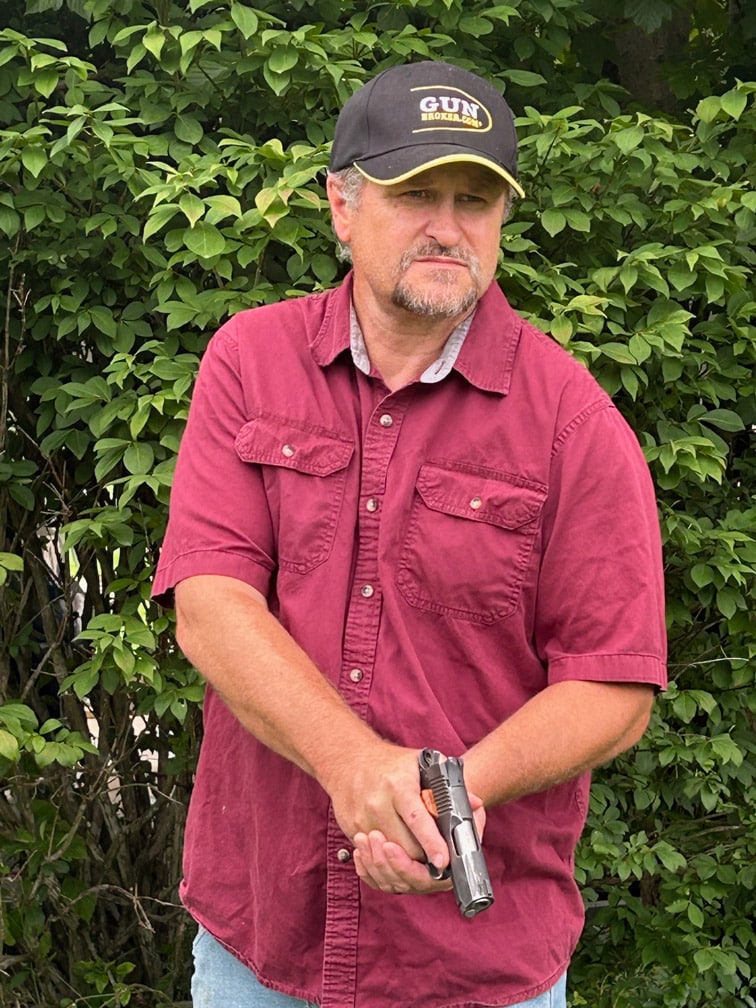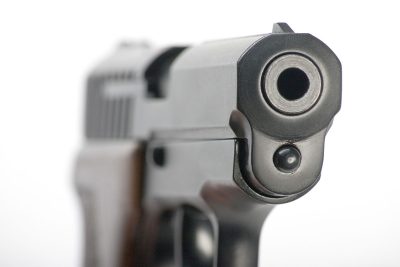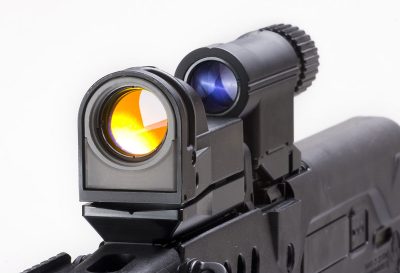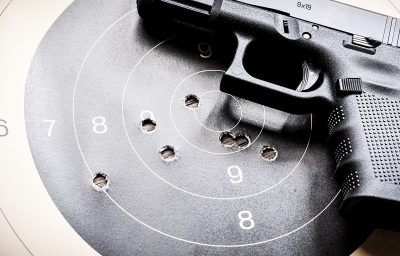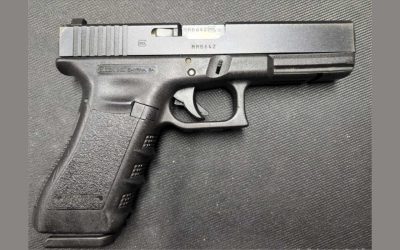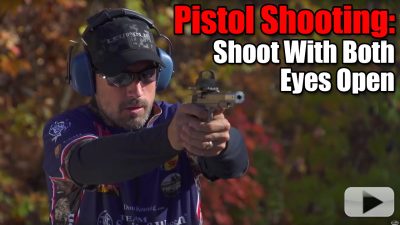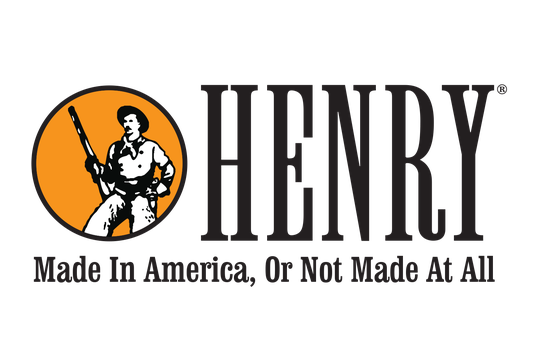Start New Shooters with These Affordable Handguns
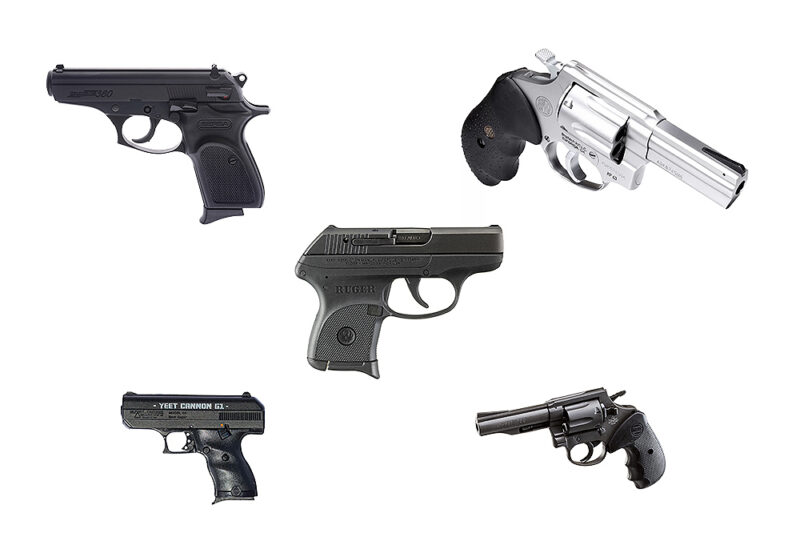
If power comes from numbers, then as more people get into firearms, guns become safer from extinction. So, basically, gun advocates need to introduce more folks to shooting to ensure survival of the shooting sports. Part of this helping them find affordable handguns.
Of course, this must be done properly; handing a brand-new shooter .500 Smith & Wesson is counterproductive and down-right stupid. New shooters must start with lower caliber firearms, particularly regarding handguns. Most shooters benefit by starting with something easily controlled, such as a .22 LR. This allows new shooters to learn proper stance, sight alignment, trigger control and follow-through without worrying about recoil.
Recoil is the largest obstacle new shooters must overcome. This is particularly important for those wanting to learn for self-defense; a 22 LR or .25 ACP is better than no gun during an attack, but not much. New shooters need to start low and slowly go up in caliber, keeping in mind that size and design of a gun matters as much as caliber when talking about recoil. A subcompact 9mm can spook someone as quick as a .357 Mag. Recoil is physics, felt recoil is personal. Of course, before sending rounds downrange, every new shooter needs to learn firearm safety.
The Rules of Gun Safety
There are two main set of rules regarding firearm safety. One comes from the National Rifle Association, while the other is put out by the National Shooting Sports Foundation. They are very similar, however, both coming from advocates of firearms safety and the 2nd Amendment.
The NSSF list highlights the basics of firearms handling and storage, emphasizing that shooters are the key to firearms safety. According to the NSSF, the four primary rules of firearms safety are:
- Always Keep Firearm Pointed in a Safe Direction
- Treat All Guns as Though They are Loaded
- Keep Your Finger Off the Trigger until You are Ready to Shoot
- Always Be Sure of Your Target and What’s Beyond It
Following these four rules keeps both shooters and bystanders safe. And these rules must be followed whenever a firearm is present for any reason. This includes target practice, training, hunting and even self-defense. A bullet fired from a gun cannot be recalled, and a shooter is responsible for every single bullet fired.
Learning at the Range
Once safety has been properly covered, beginners need to head to the range with an experienced shooter and a few different firearms in varying calibers. A .22 LR pistol or revolver, such as a Browning Buck Mark or Ruger SP101, provides the best opportunities for new shooters to learn shooting skills. From there, newcomers should step up to a full size 9mm or .38 Spl., or maybe a .380. These home-defense or duty-sized guns offer less felt recoil than smaller handguns in the same caliber. As such, newer shooters can learn about the recoil of self-defense calibers without the session being punishing.
Then, shooters can start trying more concealable handguns, such as snubnosed revolvers or compact 9mms, or even go up to a .40 S&W or .45 ACP. Eventually, people obtain enough experience to move from basic safety and proficiency training to more realistic exercises. This is true whether or not shooters are using high-end or affordable handguns.
Training, Training & More Training
Lots of shooters go to the range to improve accuracy and to have a good time. Range days can be fun and useful to maintain shooting skills. Those interested in being truly prepared, however, take range time much more seriously. The best shooters, whether defensive or competition, train constantly. In fact, special forces operators, those considered the best shooters in the world, train relentlessly when not on a mission. Those who want to be truly proficient in self-defense need to follow that mindset. Mindset is a major factor in self-defense.
Training for the real world can come in many forms, including articles and videos. However, most benefit from at least taking a defensive firearms class from a reputable instructor. Many gun stores have an indoor range, with most providing classes taught by NRA-certified instructors. Classes range from basic pistol, rifle and shotgun all the way up to personal protection, covering awareness and tactics.
Those wanting to go even further can look into one of the firearm training schools, such as Gunsite, which provides intensive training with some of the best instructors in the world. Students learn strategy, tactics, awareness and mindset in addition to defensive shooting.
Affordable Handguns for Beginners
A large part of having a defensive mindset is choosing a good defensive handgun and learning how to use it. It doesn’t have to be the latest and greatest, but it needs to be reliable; the gun must fire every time the trigger is pulled. Even an inexpensive (ie. affordable) gun can be a useful tool in the hands of someone who knows how to use it. There is even an old adage that says, “Beware the man who only has one gun, he probably knows how to use it.”
There are several pistols and revolvers available for less than $500, with some costing much less. The price of a gun doesn’t matter when carrying concealed; no one is supposed to see it unless you’re handling a situation.
Bersa Thunder 380
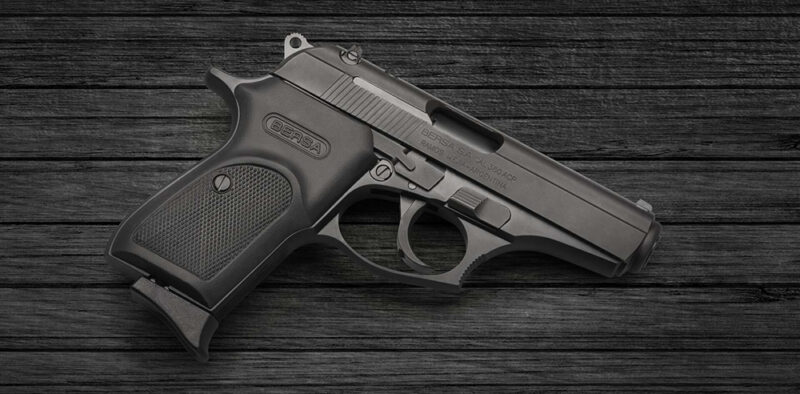
Taking a whole lot of its looks from OO7’s handgun, the Bersa Thunder 380 could be called the poor man’s PPK. This micro-compact semi-auto might not be flashy, but it’s known for being reliable and easy to use. It’s metal construction and .380 ACP chambering make it powerful enough for defense without being over the top on recoil. This DA/SA pistol also features dovetailed front and rear sights, a manual safety and 8+1 capacity. And for those wanting just a little bit of customization, it comes in seven color combinations for just $329.99. For just a little more, folks can pick up a threaded barrel version or even one that holds 16 rounds.
Hi-Point YC9

Hi-Point has received a lot of criticism over the years for its guns being clunky and heavy, and not at all nice looking. However, the company has been in business since 1992, and continues to crank out, and sell, thousands of affordable handguns every year. Most recently, Hi-Point introduced the YC9 in response to customer requests. The company has introduced four models containing features typically found on higher-priced pistols. Some of the features on these blowback pistols include threaded barrel (one comes without), adjustable three-dot sights, accessory rail, red-dot ready slide and grip safety. The most expensive comes with a Crimson Trace CTS-1500 3-MOA red-dot optic and costs a mere $325. And all of them come with a lifetime, no-questions-asked warranty.
Rock Island Armory M200
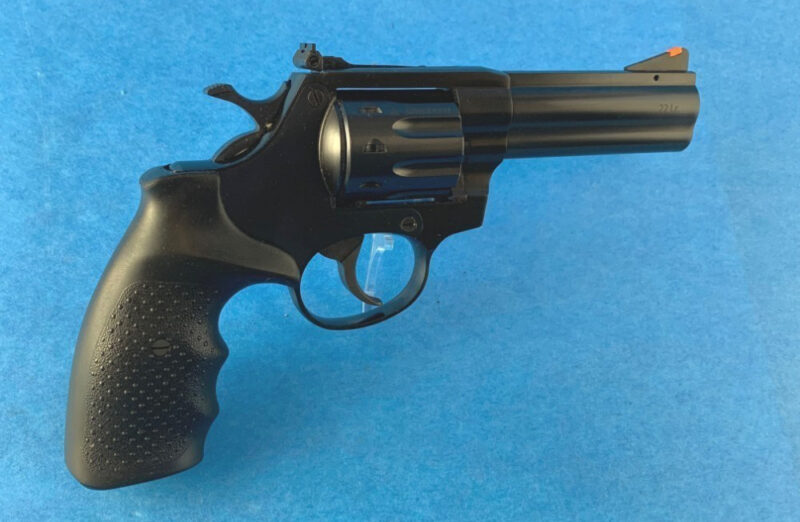
There was a time when a.38 Spl. revolver was considered the standard self-defense handgun. Today, many people prefer semi-autos, but that doesn’t mean a 4-inch revolver won’t work. In fact, many consider revolvers to be the first point and click interface. Revolvers just work. Rock Island Armory has produced the M200 since the since the 80s. This six-shot, .38 Spl. revolver features a 4-inch barrel, parkerized finish and fixed sights. It’s a basic revolver with very few trimmings. However, it lists for less than $250, making it affordable to almost all. It even has a snubnosed brother that comes with checkered wood grips and a 2-inch barrel for just $10 more.
Rossi RP63
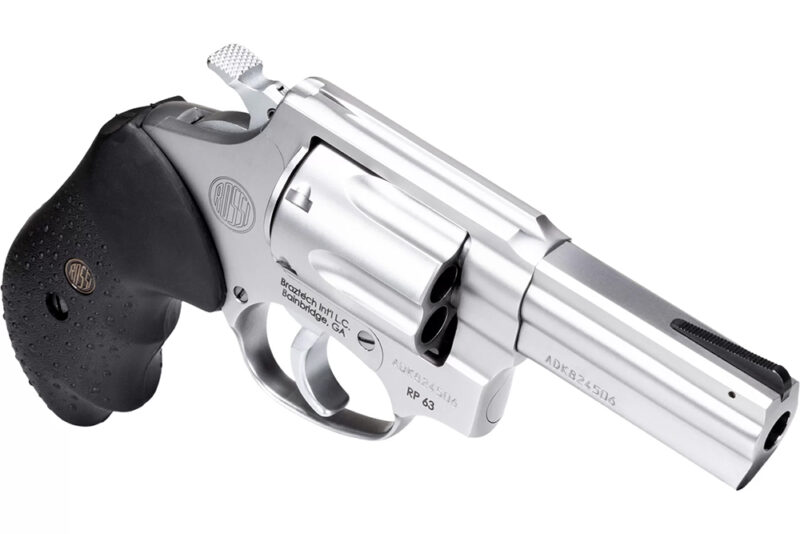
Rossi is another company that some folks like to put down. But the company has been around since 1889 and produces some nice firearms, especially when considering price. The Rossi RP63 is a DA/SA, six-shot, .357 Mag. that comes with a rubberized grip, fixed rear sight and replaceable front sight. It also features a 3-inch barrel and a ramped front sight, making it excellent for drawing from concealment. It even has a full underlug on the barrel, which helps with recoil whether using .357 or .38 loads. This revolver lists for around $460.
Ruger LCP
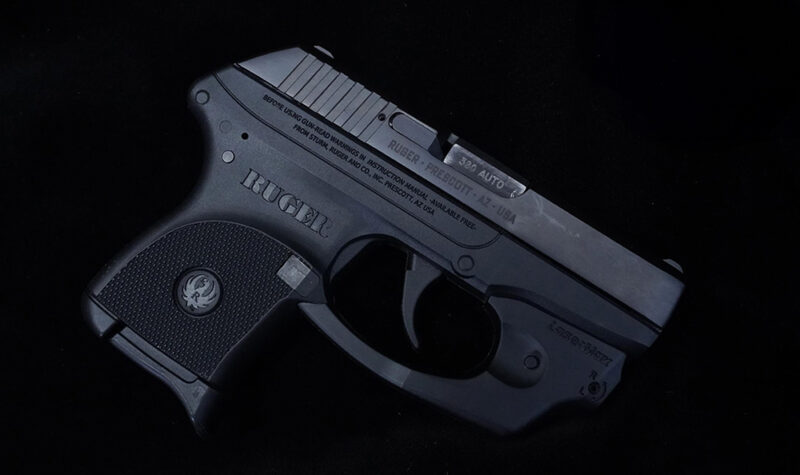
Since it’s a light, compact pistol, the Ruger LCP is aptly named. This .380 ACP semi-auto is small enough to conceal almost anywhere, but still has the power to stop an attack. Now, since is weighs only 9.6 ounces unloaded, this subcompact handgun has a little bit of snap when fired, but it is not overwhelming, especially since Ruger includes a finger-grip extension on the magazine. The fixed sights, of course, are small, but since this is a gun designed for close quarters, they work just fine. Other features include a glass-filled nylon frame, steel slide and black oxide finish. It also comes with a single, six-round magazine for $259.
Taurus G2C
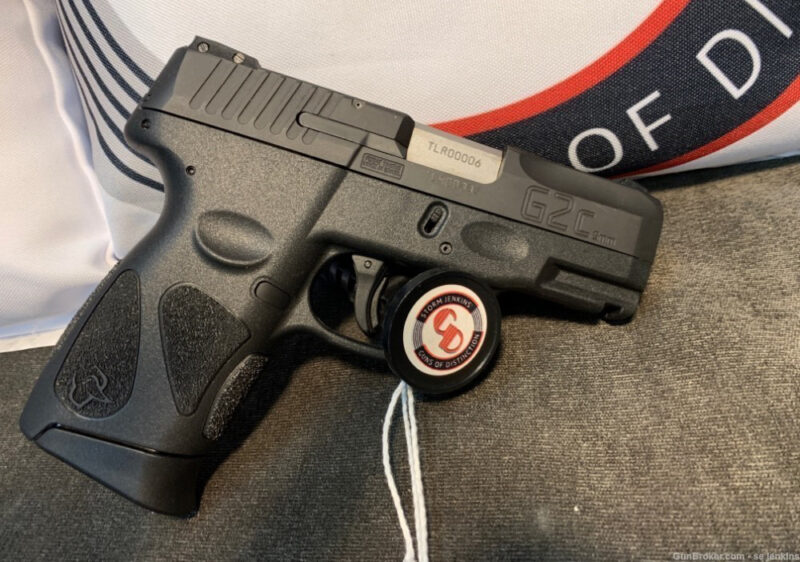
There are a lot of budget guns available to shooters. Few, however, come with the features and reliability of the Taurus G2C. When Taurus decided to make an ergonomic and reliable, yet affordable, CCW pistol, it went all out. The G2C can handle any ammo run through it, while maintaining excellent self-defense accuracy. This is the whole point of a CCW; it should fire when the trigger is pulled and it should hit what it is aimed at. This 9mm semi-auto features a single-action-only trigger, with restrike capability, an adjustable rear sight, an accessory rail and two 12-round magazines.
By Paul Rackley, GunBroker.com Editor
Related Article: Gunbroker.com’s Five Most Powerful Handguns
Related Article: New Handguns Introduced for 2024
